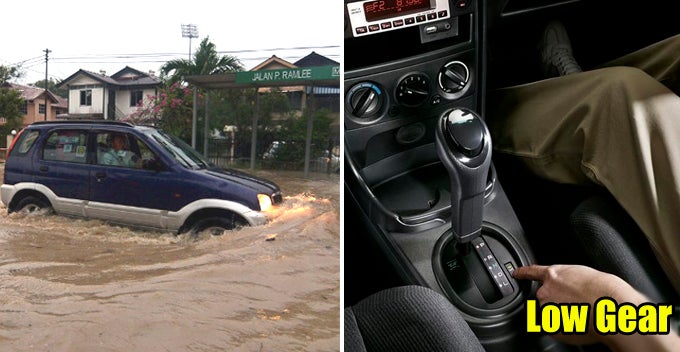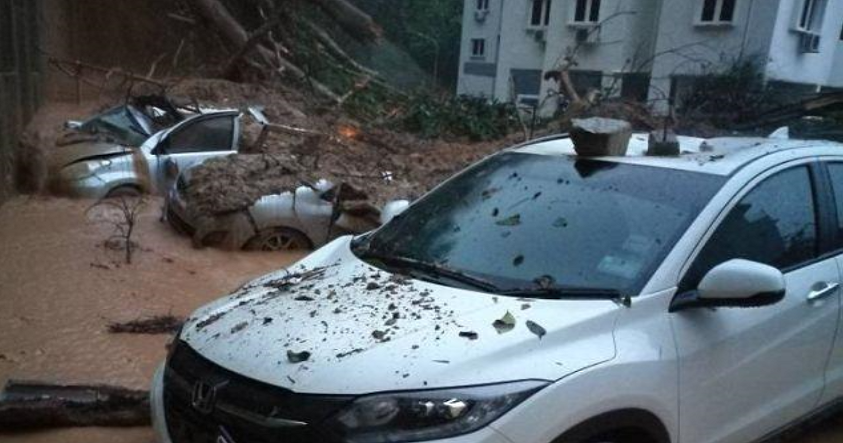Flash floods usually come without warning and leave motorists helplessly stranded on the road.
While sitting in the car waiting for the water to subside, most of us will often face this dilemma – should I take the risk and wade through the water or sit out and wait for the water level to go down?
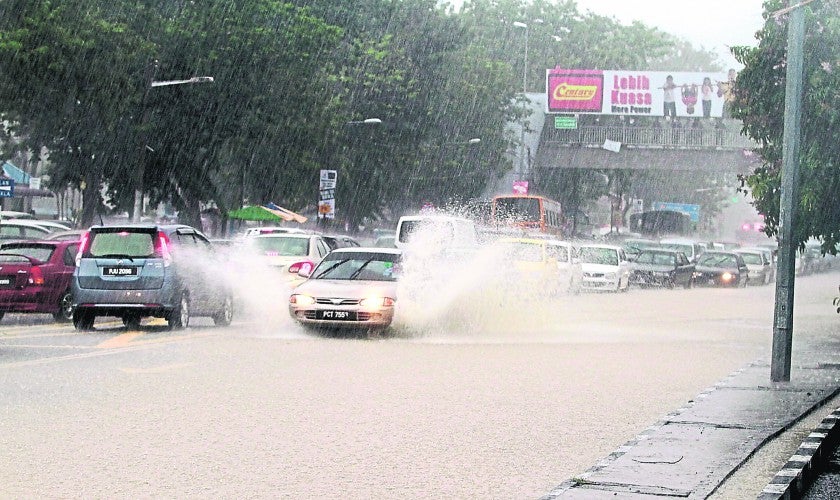
Source: MMO
Of course, the latter choice is recommended as we risk getting water into our exhaust system and air intake system otherwise.
However, if you must wade through the water, there’s a way to minimise damage, as told by this mechanic.
In an interview with Kwong Wah, an experienced mechanic named Khor, said,
“The driver should engage the low gear and maintain the RPM meter at 2,000 until you’re clear of floodwater.”
He added that whatever you do, don’t let go of the throttle or engage in high gear as water could enter the engine through the exhaust system. If that happens, your engine would be cut off in the middle of the stagnant water.
“It’d be safer if there’s a lorry in front dispersing the water to the side for you, but if the water level is too high, I’d still advise you not to go through it as your wallet might break once the water gets into your exhaust system or air intake system,” Khor said.
Besides, since water has low compressibility, getting it in the engine may cause the connecting rod to bend or even break. Needless to say, the repair or replacement cost would be a bomb! Take Perodua Myvi for instance, the repair fee is estimated to be around RM2,000 to RM3,000. Can’t imagine the cost for more expensive cars!
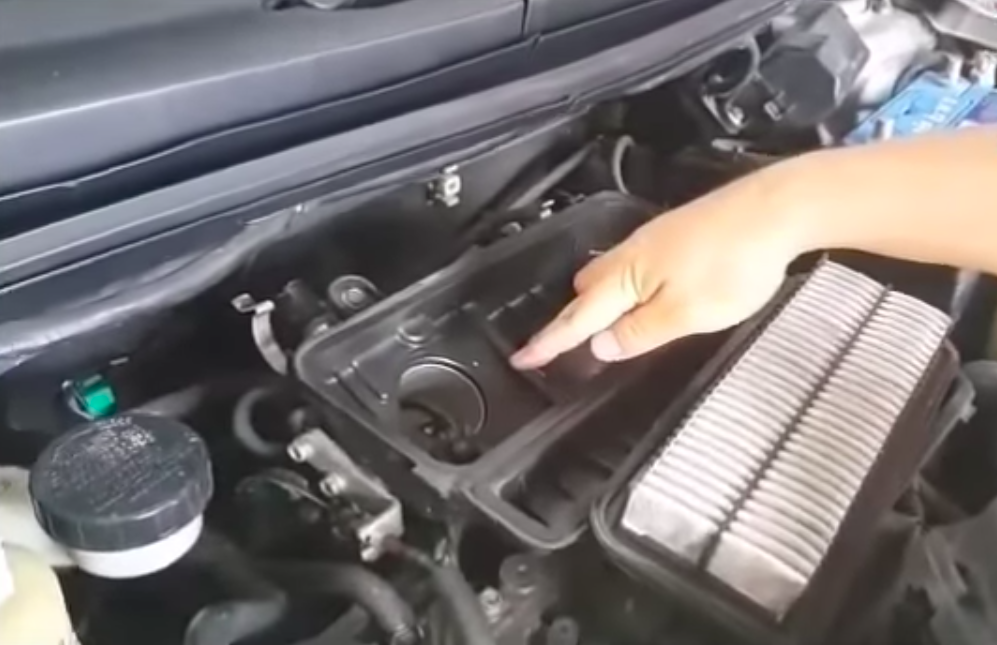
Besides that, Khor also shared a few more tips for drivers to keep their car damage at a minimum in the event of a flood.
1. Disconnect the battery
Drivers are to immediately disconnect the battery when the water starts rising. This move alone could save the Engine Control Unit (ECU) from being fried and reduce any damage by 80 per cent!
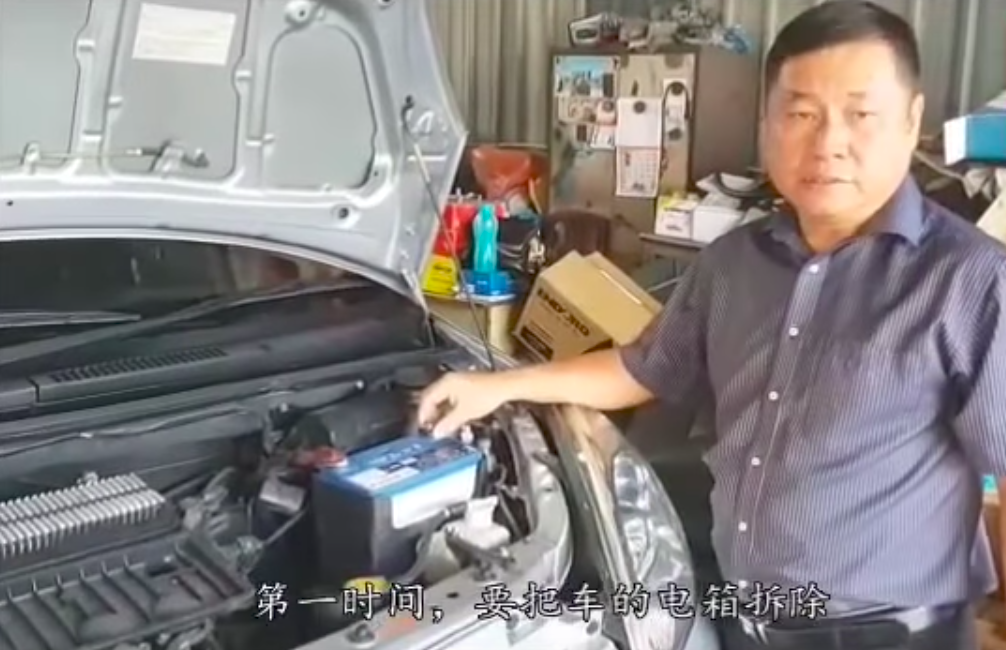
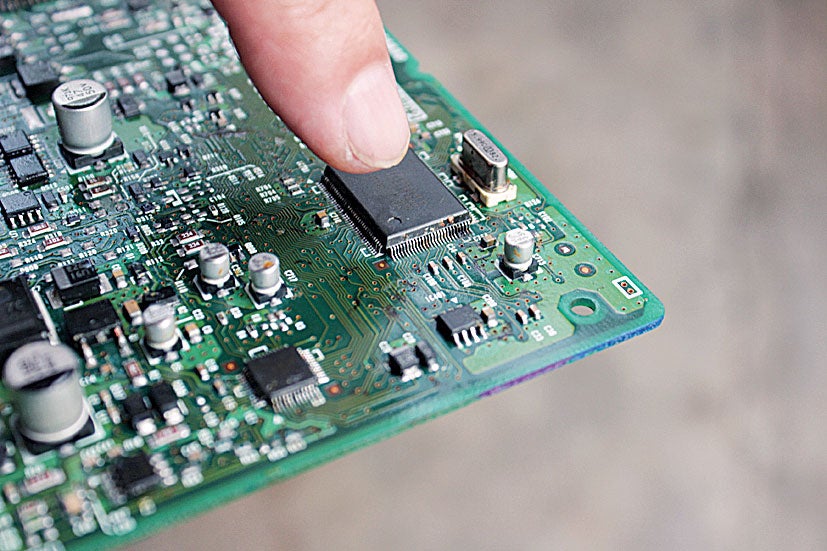
2. Park somewhere that allows the car’s front to be elevated
Although the car is submerged in water, chances are it only reaches the exhaust system and not the engine. By having the front of the car elevated, the water will automatically flow out once the floodwater recedes.
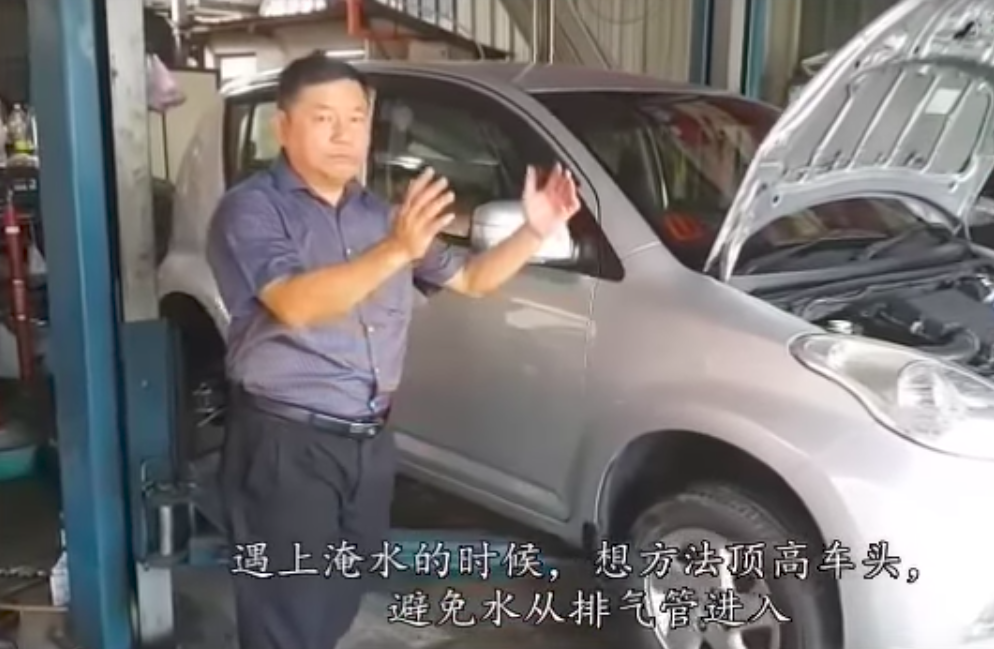
Source: Kwong Wah
3. Clean the interior and wiring system
Once you’re home safely, remember to do this or go to a nearby mechanic to get it done. Otherwise, the conductor would eventually rust, which would lead to a decrease in electrical conductivity, thus damaging the components.
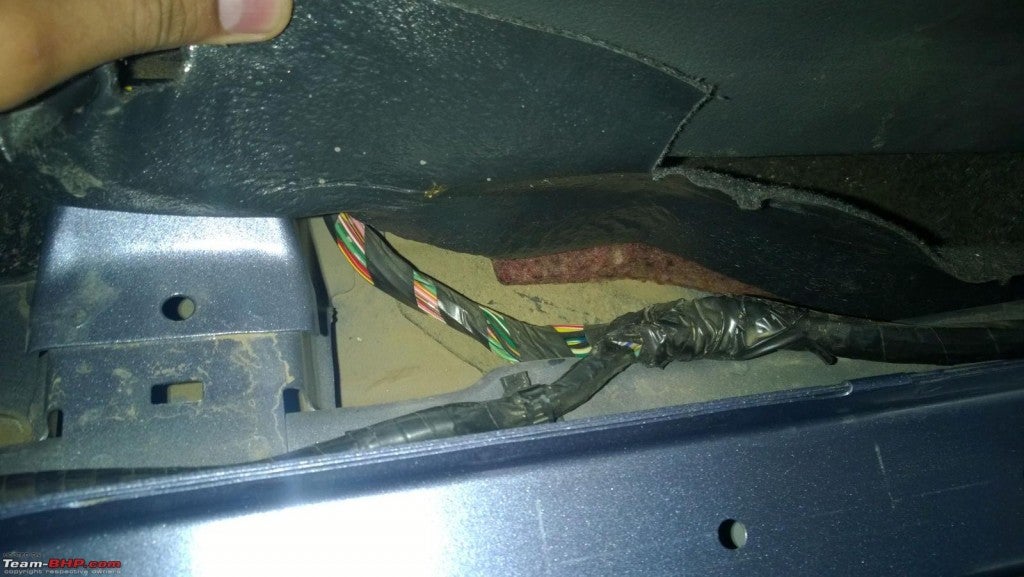
Source: Team BHP
Since repair costs are already expensive, Khor urged all mechanics and workshops not to rub salt on flood victims’ wound by raising the cost of repair. We need more mechanics like you, Khor!
So guys, spread the word and let your friends know about these tips! If you have any tips on protecting your car during a flood, why not share with us in the comment section?
Also read: Honda is Offering 50% Off Repairs for Drivers Affected by Penang Floods

